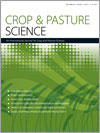Persistence of pasture is considered an important trait by many farmers using pasture-based systems. Despite this, pasture persistence is generally poorly defined. This study includes an analysis of changes in farm operating profits (OP) when pasture persistence is improved. Persistence was defined as either a 1-year increase in years at peak dry matter (DM) production or a reduction in the rate of decline in annual pasture DM production after the year that peak production occurred (duration of pasture life), both resulting in a 1-year delay in pasture renovation. Changes in OP for these definitions of pasture persistence were modelled for two dairy farms in temperate regions of Australia (Terang in south-western Victoria and Elliott in Tasmania). An increase in duration of peak DM production on the basis of economic theory increased OP more than an increase in duration of pasture life. Increases in OP for a 1-year increase in peak DM production were AU$165 ha–1 for Terang and $202 ha–1 for Elliott. This compared with $21 ha–1 for Terang and $15 ha–1 for Elliott for a 1-year increase in the duration of pasture life. Therefore, farmers and plant breeders could place more emphasis on improving the duration of time that pasture plants achieve peak DM production than improving pasture persistence at the end of the pasture plant’s lifetime, to increase annual OP.
How to translate text using browser tools
24 February 2015
The economic significance of maintaining pasture production at its peak value
C. I. Ludemann,
J. L. Jacobs,
K. F. Smith
ACCESS THE FULL ARTICLE

Crop and Pasture Science
Vol. 66 • No. 2
March 2015
Vol. 66 • No. 2
March 2015
dry matter production
legumes
Lolium spp.
pasture persistence




